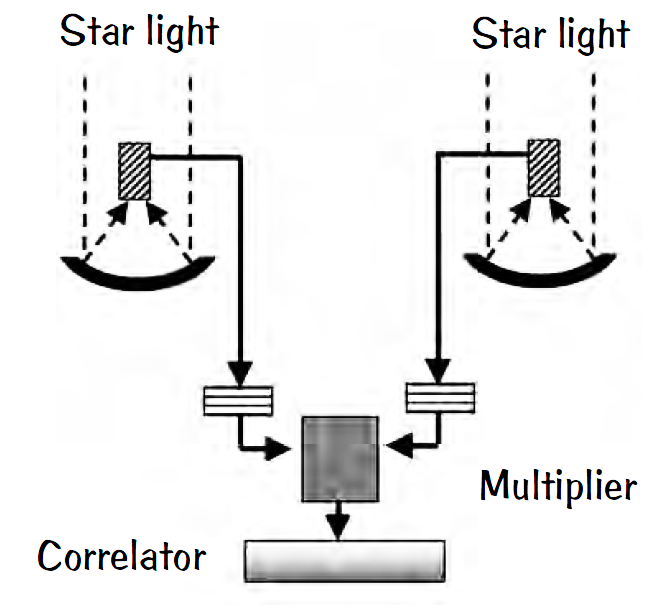
Star Diameters
 المؤلف:
Franklin Potter and Christopher Jargodzki
المؤلف:
Franklin Potter and Christopher Jargodzki
 المصدر:
Mad about Modern Physics
المصدر:
Mad about Modern Physics
 الجزء والصفحة:
p 121
الجزء والصفحة:
p 121
 24-11-2016
24-11-2016
 1337
1337
Star Diameters
One can determine the diameter of a distant star even though the diameter cannot be measured by parallax. The process uses the intensity interference, not the

amplitude interference, between the light entering two identical photo detectors (telescopes) from the left side of the star surface, and from the right side of the star surface. This process is valid even though the star is simply a point in the light-gathering optics of either photo detector. Can you explain the physics?
Answer
One can determine the interference diameter of a distant star even when optical parallax resolution of its diameter is impossible by utilizing quantum interference between the photons from the left side of the star arriving out of phase with the photons from the right side. In other words, the photons are not expected to be in phase. Their phase difference depends on three parameters: their initial phase difference, the distance to the star, and the diameter of the star. By slowly changing the separation of the two photo detectors on the arms of an intensity interferometer, one can sweep across a range of phase differences to determine the diameter of the source. One laboratory analogy might be considering how one would determine the spacing between the slits of a two-slit interference experiment with a similar apparatus. Ultimately, the amplitudes and not really the intensities interfere. However, the phase correlations depend on the product of intensities, in contrast to the two-slit interference example.
The original experiment is known as the Brown-Twiss experiment, named after the two researchers who first succeeded in using the technique to determine a star diameter back in 1957. Interference associated with the superposition of separate light intensities was viewed with considerable skepticism. Apparently, as the story goes, one of the original researchers was giving a physics talk at Caltech soon after their first measurements. In those days, several Nobel physicists would sit in the front row along with Richard Feynman and other prominent physicists. About 10 minutes into the talk, Feynman walked out, much to the dismay of the speaker. About 40 minutes later, just near the end of the talk, Feynman walked back in and sat down in his seat again. The speaker then asked why he walked out and then returned. Feynman responded that he had walked out because he did not believe that the physics was correct. He explained that he had gone back to his office and worked out the problem, only to discover that the physics had been done correctly. He then returned to acknowledge the cleverness of the speaker and his colleague. Now the speaker was in dismay again, amazed that someone could have worked out the many details in so short a time!
 الاكثر قراءة في طرائف الفيزياء
الاكثر قراءة في طرائف الفيزياء
 اخر الاخبار
اخر الاخبار
اخبار العتبة العباسية المقدسة


